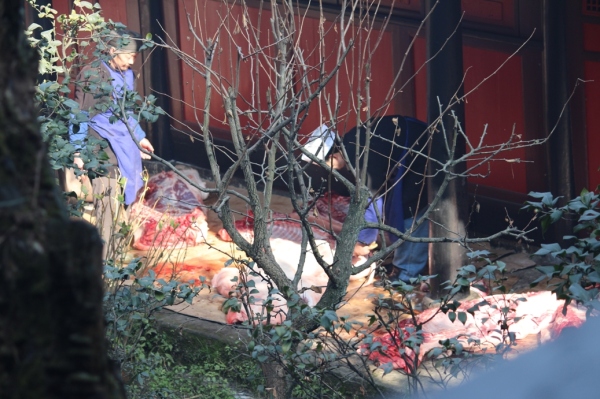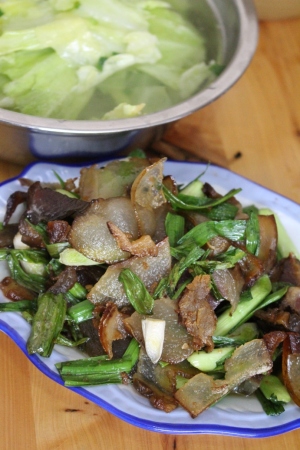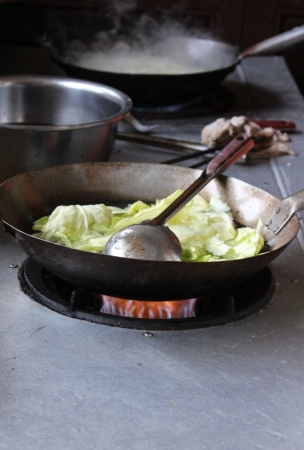Often when I travel, the best food experiences are not so much at renown restaurants but the unexpected places where I am surprised by good, honest, humble food.
And so it was the case during my visit to Chengdu last week. We had gone to see Mt Qingcheng, one of the most important sites in Taoism and considered one of the eight ‘fairylands’ of China. Much of it was an uphill climb on perfectly laid out wooden boardwalks through beautiful parkland, heading up, up and up to the Taoist temple where we were anticipating some homecooked food by Taoist monks. By the time we heaved our way to the top, we had worked up an appetite and quite ready to tuck into lunch.
Unfortunately the monks had decided to slaughter a pig that very morning to make local bacon and the kitchen was far too busy to entertain curious tourists.
So we pottered back down the hill where we came upon a little stall selling ‘xian chai’, a genre of food which was cooked a la minute. The lady proprietor was the only one there, but with few local vegetables displayed on plastic trays, some chicken and gingko nuts, she whipped up in less than 15 minutes, a veritable feast of local dishes.
The star of the show was doubled boiled chicken soup with gingko nuts, a local speciality which accounted for half the bill. But there was also a wonderful dish of tender winter bamboo shoots stir fried with spring onions and chilli, local bacon (very fatty) fried with leeks, cabbage soup, and other assorted stir fried vegetables.
I am constantly reminded that good food is not necessarily elaborate, and indeed the simpler it is, the more I am impressed. For its one thing to have an army of trained cooks at your beck and call in a professional kitchen equipped to the nines, but it’s quite another to whip up a fabulous meal over a tiny stove with limited ingredients and no help.







This is just fantastic.
LikeLiked by 1 person
Thank you for dropping by, FletchWolf!
LikeLike
Fifteen minutes for all those dishes! The scents must have been amazing. I’d like to learn some of her cooking techniques. I’ve not heard of gingko nuts, although I’ve seen plenty of ginko trees. Same plant?
LikeLike
Hihi. Thanks for stopping by. Yes, they were, and in a humble little space too. Sometimes, the best food I find are in these little unexpected places. 🙂 Gingko nuts are from the gingko tree, but as far as I know, only the Chinese & Japanese, and perhaps Koreans use it in their cooking. It’s one of my favourite ingredients, but old wives wisdom say women should not eat too many gingko nuts at any one time. Hmmm….perhaps I should do a post on these nuts. Thanks for highlighting them.
LikeLiked by 1 person
Sure. I’d love to know more about using them in cooking. Perhaps I could get them in Chinatown.
LikeLike
All I can say is I want! Mouthwatering stuff!
LikeLike
Haha! Thank you! And thanks too for popping by.
LikeLike